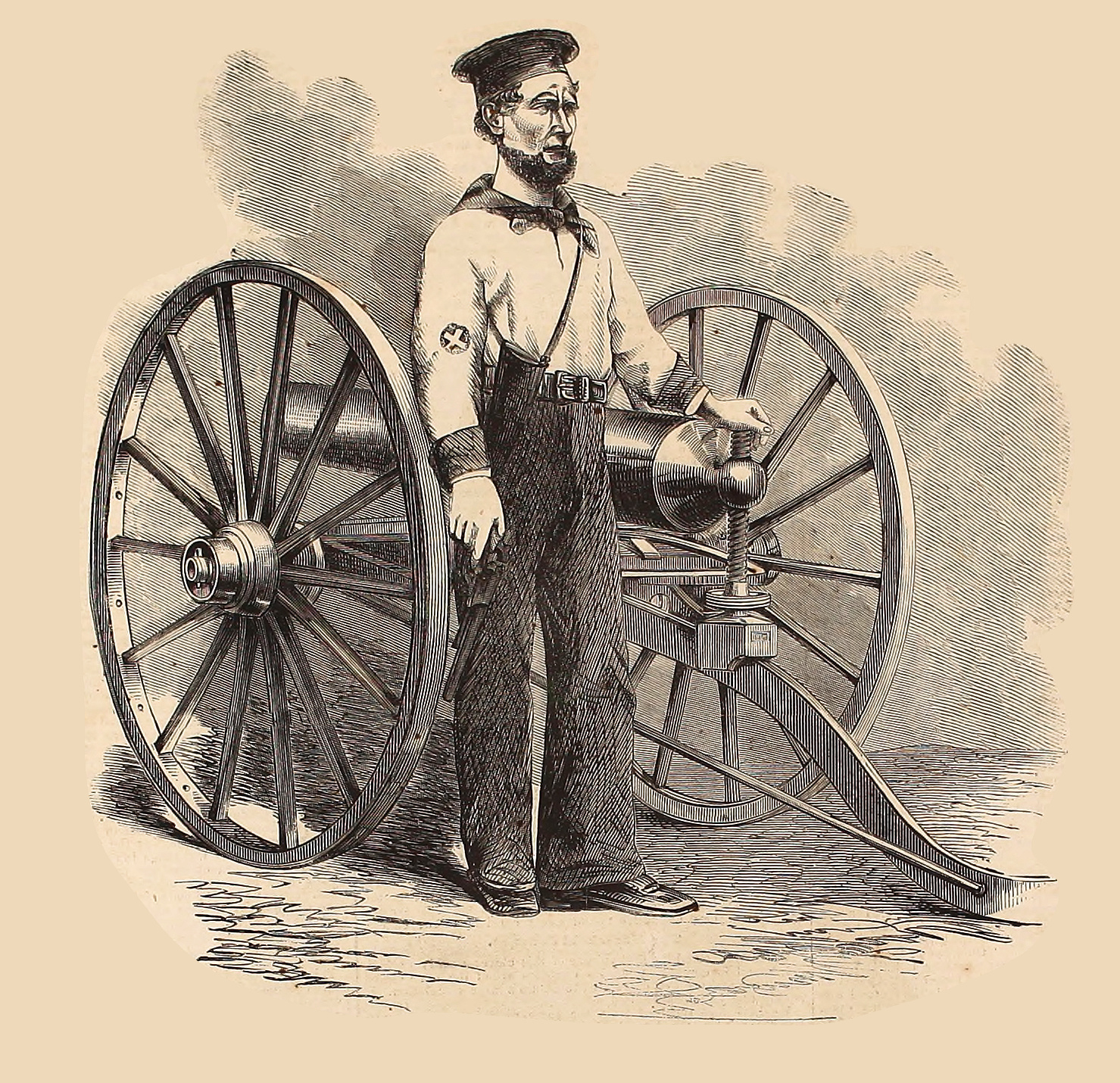 The Dahlgren Boat Howitzer Gun. Designed by Capt Dahlgren and now in General Use in the American Navy.
The Dahlgren Boat Howitzer Gun. Designed by Capt Dahlgren and now in General Use in the American Navy.
Frank Leslie’s Illustrated Newspaper, April 20, 1861
Dahlgren boat howitzers (Wikipedia)
During the Mexican–American War the U.S. found itself lacking in light guns that could be fired from ships’ boats and landed to be used as light artillery in support of landing parties (Ripley 1984, p. 87). Light artillery borrowed from the army proved unsatisfactory. In 1849, then-lieutenant Dahlgren began to design a family of smoothbore muzzle-loading boat howitzers that could be mounted in ships’ launches and cutters as well as being mounted onto field carriages. The first boat howitzers to be designed were a light 12 lb (5.4 kg) “12-pounder”, a heavy 12-pounder (originally designated a “medium”), and a 24 lb (10.9 kg) “24-pounder”. Later a lighter 12-pounder (the “small”) and a rifled 12-pounder heavy howitzer were introduced. All of the boat howitzers were very similar in design, cast in bronze, with a mounting lug or loop on the bottom of the barrel instead of trunnions, and an elevating screw running through the cascabel. Having the single mounting lug expedited moving the howitzer from the launch to field carriage and back. In naval service the boat howitzers had gun crews of 10 in the boat and 11 ashore.
The field carriage was made of wrought iron. No limber was used in naval service, but two ammunition boxes (each containing nine rounds) could be lashed to the axle of the field carriage. Members of the gun crew also carried a single round in an ammunition pouch. The smoothbore boat howitzers fired shell, shrapnel, and canister. The rifled 12-pounder fired shot and shell. Percussion primers were used in naval service, but the howitzers could also use friction primers obtained from the army.
The small and the light 12-pounder boat howitzers were not popular. The heavy 12-pounder howitzers were most popular at their intended jobs, while the 24-pounder boat howitzer were found to serve excellently as primary and secondary armaments on river gunboats and similar small vessels. Some 24-pounder boat howitzers were apparently rifled, but some contemporary accounts confuse rifled 24-pounder boat howitzers and the 20-pounder rifles.